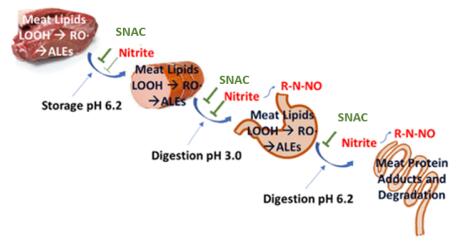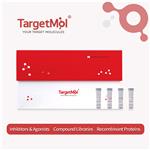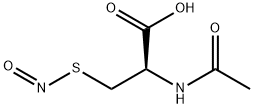The application of S-nitroso-N-acetylcysteine
Mar 3,2020
Protection of Liver Injury
S-nitroso-N-acetylcysteine (SNAC) is an S-nitrosothiol that can act as an Nitric oxide (NO) carrier and donor. NO has a systemic and tissue vasodilatation effect and also acts in hepatic microcirculation [1].
Ischemia-reperfusion (I/R) injury is among the major causes of poor graft function early after liver transplantation that adversely influences patient survival. A variety of mediators have been implicated in the pathogenesis of I/R vascular injury, including nitric oxide (NO). Because of the beneficial effects of NO during preconditioning and reperfusion, strategies to prevent or ameliorate I/R injury through the stimulation of hepatic NO production are an area of significant clinical interest. S-nitroso-N-acetylcysteine (SNAC) acts an NO donor in the prevention of liver I/R injury in an animal mode. Experimental results demonstrated that SNAC solution showed a greater protective effect to preserve rat livers during cold storage [2].
Steatosis is currently the most common chronic liver disease and it can aggravate ischemia-reperfusion (IR) lesions. Wellington Andraus and team hypothesized that S-nitroso-N-acetylcysteine (SNAC), an NO donor component, can ameliorate cell damage from IR injury. They studied the effect of SNAC on liver IR in rats with normal livers compared to those with steatotic livers, and the research results show that SNAC effectively protects against IR injury in steatotic livers but not in normal livers [3].

Figure 1 SNAC as an antioxidant
Antioxidant and antifibrotic effects on Chronic Liver Injury
Liver fibrosis is a common response to chronic liver injury which, without an effective treatment in the early stages, progresses to irreversible cirrhosis [1]. Since the therapeutic options for cirrhosis complications are often poorly effective, new approaches to the prevention and treatment of hepatic fibrosis are clearly needed [4]. Reactive oxygen species (ROS) are involved in the development of hepatic fibrosis and they induce hematopoietic stem cell (HSC) proliferation and collagen synthesis. Previous studies have shown that SNAC prevents nonalcoholic fatty liver disease in rats [10] and promotes down-regulation of several genes linked to glutathione synthesis and fatty acid metabolism. Rafael Vercelino and his colleagues evaluated the effects of SNAC administration on oxidative stress and a fibrosis reduction in rats with biliary cirrhosis, a well-described experimental model of liver cirrhosis. Antifibrotic and antioxidant effect were compared to those of N-acetylcysteine (NAC). Summing up, results obtained revealed that SNAC blocks the elevation of serum markers of hepatic injury and exerts antioxidant and antifibrotic effects in rats with secondary biliary cirrhosis. Thus, SNAC may be an interesting candidate for the treatment of human fibrosis and cirrhosis. Nevertheless, further studies are required to establish the cause-effect relationship between the different components assessed and the exact role o of the different liver cell types [4].
Except the application in the pharmacology, SNAC also acts as an antioxidant in cured meat [5]. The World Health Organization has issued warning regarding consumption of nitrite-processed meat, indicating it definite carcinogenic effect in human. This decision created a major problem to the food industry because nitrite is difficult to replace as a preservative, which serves multiple functions simultaneously, including antioxidative effect. Lipid peroxidation is one of the primary mechanisms of quality deterioration in foods, especially in meat products. Nitrite has been traditionally used by the food industry as an additive. SNAC seems to be a good candidate molecule for the replacement of nitrite in meat products (figure 1). SNAC at concentration like nitrite used by the industry prevents lipid peroxidation in the product, even after storage for 1 month at 4 °C. In condition like those used by the industry for meat products processing, SNAC acts better than nitrite to provide antioxidant protection without the side effect of N-nitrosation, oxidation, and the loss of nutrient generated by nitrite.
References
[1] https://www.scielo.br/scielo.php?script=sci_arttext&pid=S1807-59322010000700011
[2] Scherer de Fraga R. et. al., S-nitroso-N-acetylcysteine: a promising drug for early ischemia/ reperfusion injury in rat liver. Transplant Proc. 2010 Dec;42(10):4491-4495.
[3] Wellington Andraus et.al., S-nitroso-N-acetylcysteine ameliorates ischemia-reperfusion injury in the steatotic liver, Clinics vol.65 no.7 São Paulo, 2010, 715-721
[4] Rafael Vercelino, et. al., S-nitroso-N-acetylcysteine attenuates liver fibrosis in cirrhotic rats, Journal of Molecular Medicine, volume 88, pages 401–411(2010)
[5] Joseph Kanner et. al., S-Nitroso-N-acetylcysteine (NAC-SNO) as an Antioxidant in Cured Meat and Stomach Medium, J. Agric. Food Chem. 2019, 67, 39, 10930-10936
- Related articles
- Related Qustion
2,2',4,4'-Tetrahydroxybenzophenone (BZP-2) is water-soluble and light-yellow powder (figure 1). BZP-2 is widely used in perfumes to prevent their degradation due to light.....
Mar 3,2020Catalyst and AuxiliaryPotassium thioacetate is an organosulfur compound and a salt with the formula CH3COS?K+. This white, water-soluble solid is used as a reagent for preparing thioacetate esters and other derivatives.....
Mar 4,2020Organometallic compoundsS-nitroso-N-acetylcysteine
56577-02-7You may like
- Is Climbazole Shampoo Safe for Hair?
Jul 10, 2025
- Mechanism of Action of Terconazole
Feb 28, 2025
- Benzyldodecyldimethylammonium Bromide: Applications and Toxicity
Dec 25, 2024
S-nitroso-N-acetylcysteine manufacturers
- S-Nitroso-N-acetylcysteine
-

- $2500.00 / 100mg
- 2024-10-24
- CAS:56577-02-7
- Min. Order:
- Purity:
- Supply Ability: 10g






